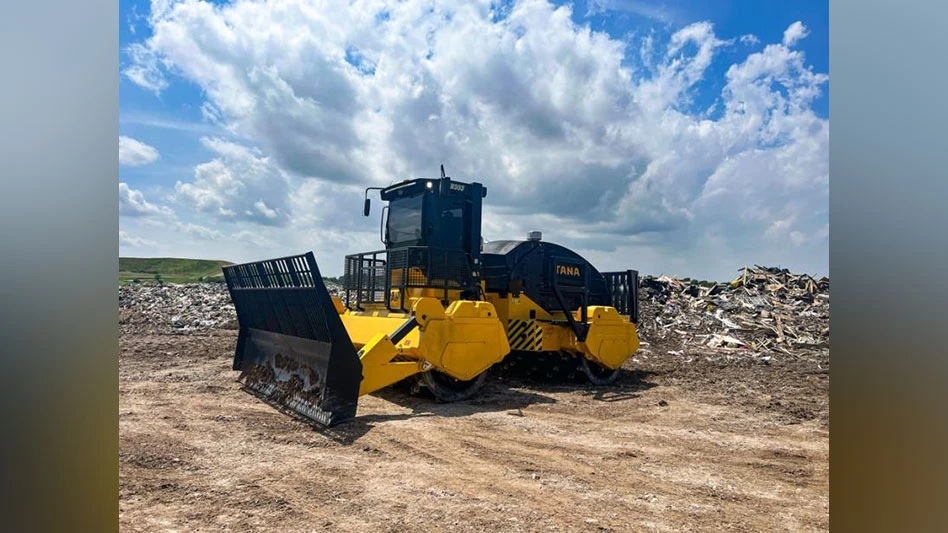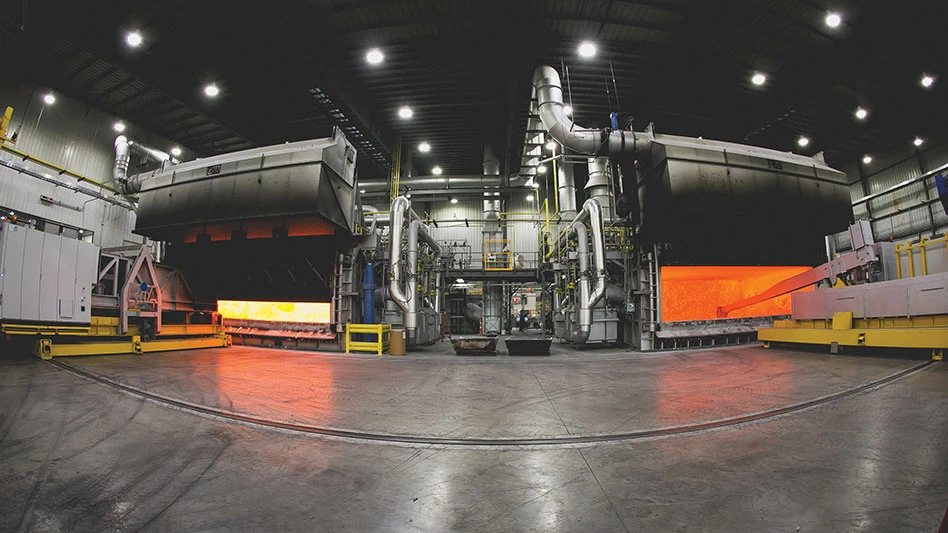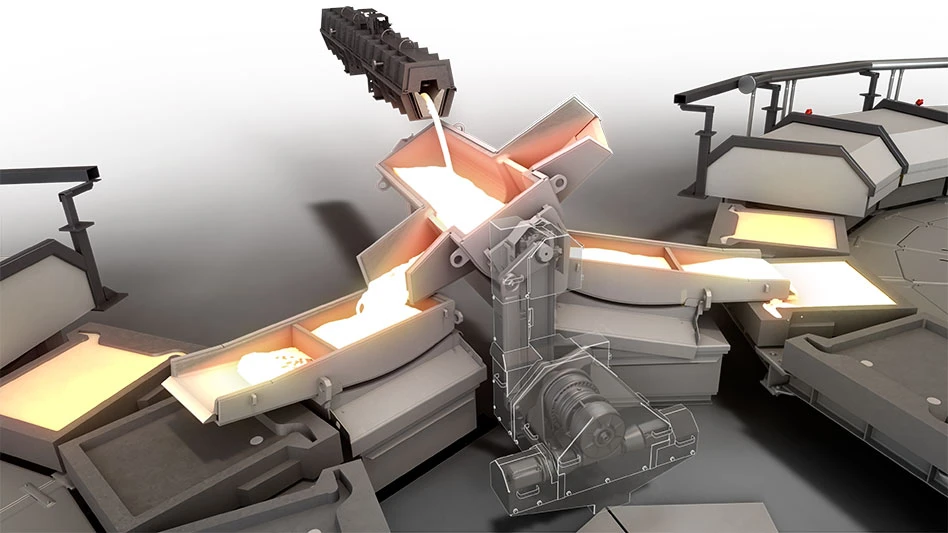
When shopping for shredders, recyclers are confronted by an array of options, from pierce-and-tear styles to hammer mills to strip shredders, to name a few. Some of the available technology is more suited to primary reduction, while others provide controlled sizing.
“The nice thing about available shredding technologies is that there is a solution to recycle almost anything,” says Dave Fleming, sales and marketing director for SSI Shredding Systems Inc., a shredding equipment manufacturer based in Wilsonville, Oregon. “If an item contains materials that have value, there is a shredding solution that could be employed to liberate and prepare that material for recovery.”
Despite the seemingly overwhelming array of options available, a few primary factors can help a recycler narrow down the right shredder style for the application at hand.
Consider these factors
Fleming says recyclers must understand the materials available for recovery and recycling and any other commingled materials prior to selecting a shredder. Knowing the quantity of material to be processed also is a key factor when shopping for a shredder. Finally, Fleming says, recyclers must consider the required particle size for the following step in the recycling process.
“Particle size requirements will dictate the type of shredder that can be used for a given material,” says Jeff Dietterich, president of Souderton, Pennsylvania-based Advanced Equipment Sales (AES), a distributor of a range of recycling and solid waste management equipment.

“If a customer requests a solution to produce a controlled output particle size, the shredding equipment will need to incorporate some kind of screen,” Fleming says, adding that screens can be internal or external to the shredder depending on the material being processed and the desired goals of the application.
“Screens control material size and restrict output, so there is a certain ‘residence time’ required in a shredding system that needs to be considered when a customer needs a specific output size. This can impact the type and/or size of shredder a supplier would recommend,” he says.
This “resident time” requirement often leads to reduced throughput. “Generally speaking, the smaller the particle size, the lower the throughput will be per energy (horsepower) input,” Dietterich says.
In addition to the type of material to be shredded and the desired particle size, he advises that recyclers consider whether the material is combustible, flammable or hazardous and the form the material will be delivered to the shredder.
Know the technology
In addition to considering the type and volume of material to be processed and the desired particle size, recyclers also may want to familiarize themselves with the basic types of shredders to help narrow the field of possible options.
Fleming says certain shredding technologies have been developed to process metals. These can include single-shaft shredders for light metals and hammer mill and dual-shaft models for thicker metals.
“A single-rotor grinder is not a machine that would last in an application that regularly sees thick pieces or large qualities of metal parts,” he adds.
“The proper selection of the metering system can have a dramatic impact not only on throughput but on shredder reliability, durability and service life.” – Jeff Dietterich, AES president
“Some machines are designed to break and liberate thick metals so they can be removed prior to further processing,” Fleming continues. “These machines can pay for themselves in downstream equipment uptime and reduction in operational and maintenance costs.”
Some shredding technology can process metals to produce a small, controlled particle size, he says, as in the case of electronics recycling. Fleming adds, “This is an important component in the liberation and recovery of materials from one another.”
Other shredders are designed primarily for paper, plastic and low-metal applications, he says. “Those typically have lower parts costs and a lower capital cost than a machine designed to process metals.”
Fleming adds, “A two-shaft rotary shear shredder is not able to make small, controlled particle sizes without quite a bit of ancillary material handling and screening machinery. In an application such as plastic or paper processing, where a small output size may be required, there are better and more cost-effective solutions than a two-shaft shredder.”
Strip, single-shaft and pierce-and-tear shredders commonly are used to process paper, Dietterich says, while hammer mills are suitable for hard materials, including hard drives and concrete.
“Old tires go through several stages of shredding, typically starting with a pierce-and-tear and ending with fine granulation,” Dietterich adds.
Some shredder types respond better than others when they encounter contaminants in the infeed material. Dietterich offers this example: “We had an application where a customer was using a high-rpm hogger to process waste paper from a printing application. On occasion, a steel shaft or hammer head would find its way into a waste bin that would be dumped into the shredder. Every time this happened, that shredder shaft would bend or break, resulting in thousands of dollars’ worth of repairs, machine downtime and lost revenue. The solution was to use a low-rpm shredder that would jam and safely shut itself off if it encountered an unshreddable item. A few cutters would become damaged, but the shredder would continue operation until its next scheduled maintenance cycle, when the cutters could be easily replaced.”
Factors affecting throughput
A shredder’s throughput is affected by a variety of factors, including material type, bulk density and particle size requirements, Dietterich says, adding that infeed method, take-away method and process inefficiencies also play roles.

Fleming says “material type (i.e., lightweight foam versus dense rubber or metals), material condition (i.e., loose, baled, prepackaged, etc.), feed method (i.e., bulk loaded with a front-end loader versus meter fed with a belt conveyor) and of course the type of shredder selected (shaft configuration in the machine, speed, grabbing ability, etc.)” each affect throughput.
“Some shredders are specifically designed to be fed in bulk,” he continues. “These can also be conveyor fed, but the material handling system does not really matter on them.”
Dietterich says bulk-fed shredders essentially “chew” their way through the hopperful of material.
“Other machines, generally machines that are deigned to produce a small, controlled output size, work best when they are conveyor fed a consistent flow of materials,” Fleming says.
“The proper selection of the metering system can have a dramatic impact not only on throughput but on shredder reliability, durability and service life,” says Dietterich.
When it comes to getting the best performance from a shredder, he adds, “It’s all about having the right tool for the job. You would not want to bulk load the hopper of a pierce-and-tear style shredder; you want to use a metering conveyor to control that hopper loading to maximize throughput.”

Explore the August 2016 Issue
Check out more from this issue and find your next story to read.
Latest from Recycling Today
- Fenix Parts acquires Assured Auto Parts
- PTR appoints new VP of independent hauler sales
- Updated: Grede to close Alabama foundry
- Leadpoint VP of recycling retires
- Study looks at potential impact of chemical recycling on global plastic pollution
- Foreign Pollution Fee Act addresses unfair trade practices of nonmarket economies
- GFL opens new MRF in Edmonton, Alberta
- MTM Critical Metals secures supply agreement with Dynamic Lifecycle Innovations








